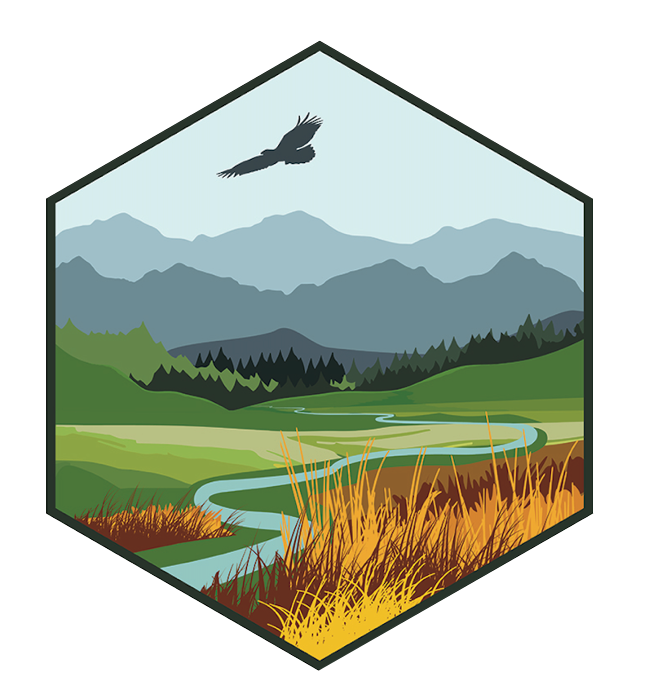Historical and projected climate data and water balance data under three GCMs (CNRM-CM5, CCSM4, and IPSL-CM5A-MR) from 1980 to 2099 was used to assess projected climate change impacts in North Central U.S. We obtained required data from MACA data (https://climate.northwestknowledge.net/MACA/). Historical time period ranges from 1980 to 2005, and projected time period ranges from 2071 to 2099. The climate data includes temperature and precipitation whereas water balance data includes Potential Evapotranspiration (PET) and Moisture Index (MI) estimated using Penman-Monteith and Thornthwaite methods defining as Penman PET, Penman MI, Thornthwaite PET and Thornthwaite MI. Both types of MI was estimated as a ratio of Precipitation and Evapotranspiration. The MACA data includes Penman PET which was estimated using Penman-Monteith methods. However, Thornthwaite PET was estimated using Thornthwaite methods for this project.
Historical and projected climate data and water balance data under three GCMs (CNRM-CM5, CCSM4, and IPSL-CM5A-MR) from 1980 to 2099 was used to assess projected climate change impacts in North Central U.S. We obtained required data from MACA data (https://climate.northwestknowledge.net/MACA/). Historical time period ranges from 1980 to 2005, and projected time period ranges from 2071 to 2099. The climate data includes temperature and precipitation whereas water balance data includes Potential Evapotranspiration (PET) and Moisture Index (MI) estimated using Penman-Monteith and Thornthwaite methods defining as Penman PET, Penman MI, Thornthwaite PET and Thornthwaite MI. Both types of MI was estimated as a ratio of Precipitation and Evapotranspiration. The MACA data includes Penman PET which was estimated using Penman-Monteith methods. However, Thornthwaite PET was estimated using Thornthwaite methods for this project.
Abstract from Ecosphere: The Prairie Pothole Region, situated in the northern Great Plains, provides important stopover habitat for migratory shorebirds. During spring migration in the U.S. Prairie Potholes, 7.3 million shorebirds refuel in the region's myriad small, freshwater wetlands. Shorebirds use mudflats, shorelines, and ephemeral wetlands that are far more abundant in wet years than dry years. Generally, climate change is expected to bring warmer temperatures, seasonality shifts, more extreme events, and changes to precipitation. The impacts to wetland habitats are uncertain. In the Prairie Potholes, earlier spring onset and warmer temperatures may advance drying of wetlands or, alternately, increased spring precipitation may produce abundant shallow‐water habitats. To look at the availability of habitats for migratory shorebirds under different climate regimes, we compared habitat selection between a historic wet year and a dry year using binomial random‐effects models to describe local and landscape patterns. We found that in the dry year shorebirds were distributed more northerly and among more permanent wetlands, whereas in the wet year shorebirds were distributed more southerly and among more temporary wetlands. However, landscape‐scale variation played a larger role in the dry year. At the local wetland scale, shorebirds selected similarly between years—for shallower wetlands and wetlands in croplands. Overall, while shorebirds were sensitive to local habitat conditions, they exhibited a degree of adaptive capacity to climate change impacts by their ability to shift on the landscape. This indicates an avenue through which management decisions can enhance climate change resilience for these species given an uncertain future—by preserving shallow‐water wetlands in croplands throughout the landscape.
The Capacity Building Project increased the North Central Climate Science Center (NC CSC) constituents’ abilities to gather and use climate data through formation of the Indigenous Phenology Network (IPN), collaboration with AmericaView to join the PhenoCam network, partnership with the National Conservation Training Center (NCTC) to offer free regional climate smarts courses, and mentoring of students.
Managing natural resources is fraught with uncertainties around how complex social-ecological systems will respond to management actions and other forces, such as climate. Modeling tools have emerged to help grapple with different aspects of this challenge, but they are often used independently. The purpose of this project is to link two types of commonly-used simulation models (agent-based models and state-and-transition simulation models) and streamline the handling of model inputs and outputs. This innovation will provide researchers with the capability to simulate the interactions of wildlife, vegetation, management actions, and other drivers, and thus answer questions and inform decisions about how best to manage natural resources.
Sagebrush steppe is one of the most widely distributed ecosystems in North America. Found in eleven western states, this important yet fragile ecosystem is dominated by sagebrush, but also contains a diversity of native shrubs, grasses, and flowering plants. It provides critical habitat for wildlife like pronghorn and threatened species such as the greater sage-grouse, and is grazed by livestock on public and private lands. However, this landscape is increasingly threatened by shifts in wildfire patterns, the spread of invasive grasses, and changing climate conditions. While sagebrush is slow to recover after fires, non-native grasses such as cheatgrass thrive in post-fire conditions and the spread of these species can increase the frequency and intensity of wildfires. These changes to the sagebrush ecosystems have implications for big game, threatened wildlife, and ranching. To address this growing concern, resource managers will often try to limit the spread of exotic grasses after fire events by applying herbicides, or will help native species recover through seeding or planting. However, these treatments have mixed results, and poor success is often attributed to droughts, which make it more difficult for seeds and native plants to survive; to the limited amount of time in which these treatments can be applied (usually in the first year after a fire); or because the seeds or plants used aren’t adapted to the environmental conditions of the location where they’re applied. The goal of this project is to improve our understanding of the factors that affect post-fire treatment success. Researchers will use data collected from more than 300 fires over the last 40 years, after which treatments were applied. They will identify the impacts of drought on those treatments, how incorporating information on drought forecasts or extending the period over which treatments are applied could have altered the outcomes, and how managers can better select plant material that will be more adaptable to the conditions of planting locations. Addressing this knowledge gap has been identified as a high priority in the DOI Integrated Rangeland Fire Management Strategy, by the BLM Emergency Stabilization and Rehabilitation Program, and by state management agencies in the West. The results of this project will support adaptive management of sagebrush ecosystems, which will be critical if these ecologically and economically important landscapes are to be maintained into the future. This project was jointly funded by the Southwest, Northwest, and North Central CASCs.
Big sagebrush plant communities are important and widespread in western North America and are crucial for meeting long-term conservation goals for greater sage-grouse and other wildlife of conservation concern. Yet wildfire is increasing in the West, turning biodiverse, shrub-based ecosystems dominated by sagebrush into grasslands containing invasive species such as cheatgrass and less overall plant and animal diversity. These transformations negatively impact people and ecosystems by reducing habitat quality for wildlife and the aesthetic value of the landscape. Understanding how sagebrush communities are already responding and will continue to respond to changes in wildfire, invasive species, and climate is a priority for managers in the West. However, we currently know very little about how invasive grasses and fire will affect big sagebrush rangelands in the future and whether all big sagebrush ecosystems in the western U.S. will be negatively affected. In collaboration with the U.S. Fish and Wildlife Service, this project aims to fill this gap by assessing the vulnerability of sagebrush plant communities to future changes in climate, wildfire, and invasive grasses. To do this, researchers will predict sagebrush plant community responses to climate variability, wildfire-driven increases in invasive grasses,and grazing pressure at 200 sites across the West that are particularly important for the greater sage-grouse. They will then produce maps of what future sagebrush plant communities could look like by mid- and late-century for local and regional land and wildlife managers. Additionally, a web interface will be made available for managers to view this information, allowing them to access the data. This work will provide resource and land managers with maps of what future plant communities will look like and will focus on aspects of the plant community that are most relevant for range-wide management priorities. A better understanding of the effects that climate, wildfire, and invasive grasses could have on sagebrush habitats will help managers more efficiently target their conservation efforts on areas that are projected to be the least vulnerable to these threats.
Pinyon pine woodlands are among the most widespread and iconic vegetation types in the western United States and support recreation, resource extraction, grazing, and cultural enrichment. However, severe drought conditions have recently caused dramatic mortality of pinyon pines, creating concern about the long-term impact of increasing aridity on the viability of pinyon woodlands. Ecological transformations, or regime shifts, are rapid reorganizations of an ecosystem’s species composition, governing processes, and functions. The goal of this project is to investigate ecological transformation across the Western U.S, characterize the environmental drivers of these changes in vegetation, and apply those insights to map contemporary transformation risk – across pinyon pine woodlands and other vegetation types in the U.S. West. Researchers will do this by employing data from existing paleorecords and statistical analysis of recent observations to understand what controls ecological transformations and assess the potential for 21st century transformation in pinyon pine woodlands. The primary product will be maps depicting the risk of existing pinyon and other systems transforming to other vegetation types. These maps will help resource managers understand the potential for important change in pinyon resources, helping them maximize the long-term effectiveness of their conservation and restoration management strategies.
Changing climate conditions such as increasing droughts, floods, and wildfires, hotter temperatures, declining snowpacks, and changes in the timing of seasonal events are already having an impact on wildlife and their habitats. In order to make forward-looking management decisions that consider ongoing and future projected changes in climate, managers require access to climate information that can be easily integrated into the planning process. Co-production, a process whereby scientists work closely with managers to identify and fill knowledge gaps, is an effective means of ensuring that science results will be directly useful to managers. Through a multi-phase project, researchers are implementing co-production to identify how climate change might affect management decisions, what science is available to inform those decisions, and what gaps in climate information need to be filled, to support the management of species of conservation concern in the North Central region. In phase one of the project (still ongoing), researchers are working with state wildlife managers to identify species of conservation concern in the region - such as those that are of high regional priority for managers, candidates for listing under the Endangered Species Act, or for which management decisions could be improved by more information on climate-related stressors and adaptation options. In this second phase, one species will be selected from the list to pilot the development of a co-produced work plan for science and planning that will help incorporate climate information into management decisions about the target species. This project will offer a model for making climate science more actionable, and management decisions more climate-informed.

